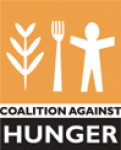Here’s an informative four-minute video to help you understand a new type of deficit that threatens the U.S. economy. Innovation helps to grow the American economy through the discovery of new products and services that will bring value to consumers and industry. Many of these innovations, ranging from GPS technology to MRIs or life-saving medicines, were the result of higher education research. We now find ourselves facing an innovation deficit that weakens our capacity to produce the research that leads to innovation.
In a nutshell, the innovation deficit is the difference between actual federal funding for scientific research and education and the amount of funding actually needed for those activities to produce a sufficient level of innovation. The point of the video is that while this may seem like an effective strategy in the short-term to reduce the budget deficit by cutting research funding to higher education, in the long-term it’s actually hurting the economy by reducing our national capacity for innovation. Because we also compete in a global economy, fewer funds domestically decreases the attraction of American universities to the world’s best scientists and innovators and instead encourages them to seek research opportunities in other countries offering more funding. That compounds the problem over time.
InnovationDeficit.org, the producer of the video, is a coalition of higher education, business and public health associations, including the Association of Public and Land-Grant Universities, the American Association for the Advancement of Science, the American Council on Education and the Business and Higher Education Forum. The Coalition hopes to use their site and video to alert members of Congress to the serious problems that may result if we allow the innovation deficit to grow.



